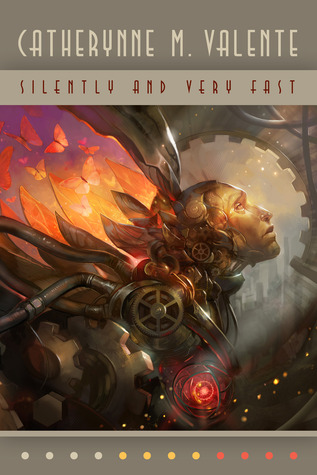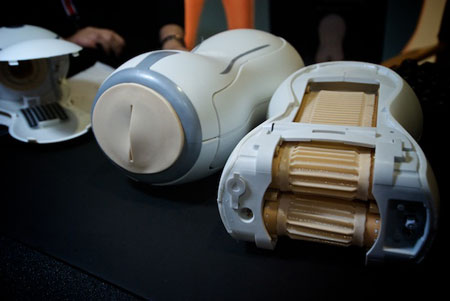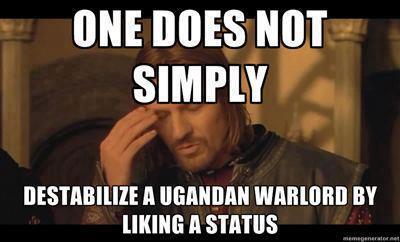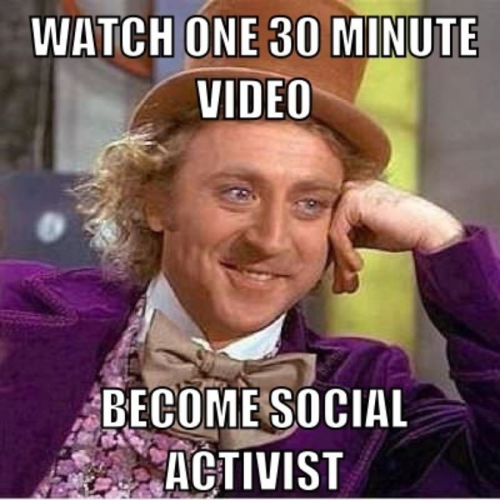Over the last couple of weeks I’ve put together a two part essay/review-like object that explores how one particular work of science fiction speaks directly to certain ideas of what cyborgs are and what it means to be them, with an eye toward a broader appreciation for how fiction allows for a richer understanding of theory. The full piece is below.

Cyborg writing is about the power to survive, not on the basis of original innocence, but on the basis of seizing the tools to mark the world that marked them as other. –Donna Haraway
Inanna cast down Tammuz and stamped upon him and put out his name like an eye. And because Tammuz was not strong enough, she cut him into pieces and said: half of you will die, and that is the half called Thought, and half of you will live, and that is the half called Body, and that half will labor for me all of its days, mutely and obediently and without being King of Anything, and never again will you sit on my chair or wear my beautiful clothes or bear my crown of being.
You might be surprised, but this is a story about me. –Catherynne M. Valente
Speculative fiction and this blog are not strangers to each other; it’s been written about here before, as a means to understanding how the present has come to look the way it does, and as a means for the imagining of potential futures (also zombies). Indeed, the term cyborg always brings with it a host of connotations firmly rooted within SF, however much it may also describe a current and very real state of being. The important thing to pay attention to here is the power of stories – the ways in which they can serve as a way to do theory in a kind of experimental setting that would otherwise be impossible. In SF – and in fiction in general – we can take the implications of theory and watch them play out, see what they would look like, solidify them in words and images, pick parts of them up and move them around. We can tweak settings and watch other worlds unfold in response.
It goes without saying that any writing that deals directly with cyborgs as a concept owes an enormous debt to Donna Haraway. I’m sure I’m not alone in saying that reading A Cyborg Manifesto for the first time was moderately life-changing – and confusing; I think it may have taken four or five times through it before I even started to sink my teeth into its conceptual meat.
A lot of this is because, especially for the average college student, Haraway is writing about theory in a way that we aren’t used to seeing; both her prose and the concepts behind it are wildly poetic, fluid, playful, dodging and dancing through meaning. She edges into and past SF in her writing – this makes her theory at once more opaque and more powerful, because, again, SF allows us to do things that we can’t otherwise do.
Given that I’m an SFnal writer, I’m also an SFnal reader, and few stories in the past year made quite the impression on me that Catherynne M. Valente’s Silently and Very Fast did (I’ve written about it here before). One primary reason for that was that as I read it, I realized that I was seeing a kind of fictional exploration of Haraway’s ideas that I had never encountered before. I should be clear: I don’t know that Haraway was explicitly in Valente’s mind as she wrote the story – though it wouldn’t surprise me. Regardless, I think Silently and Very Fast presents a wonderful opportunity to see what a lot of these concepts actually look like when they become more than theoretical – and become fictional. In this essay – really a kind of review-like object – I’ll discuss how Valente allows us to do this through her AI character Elefsis, and through Elefsis’s relationships with its human operators, as well as through Elefsis’s evolving relationship with itself.
The Embodied Virtual
My body gleams metal, as thin and slight as a stick figure. Long quicksilver limbs and delicate spoke-fingers, joints of glass, the barest suggestion of a body. I am neither male nor female but a third thing. Only my head has weight, a clicking orrery slowly turning around itself, circles within circles. Turquoise Neptune and hematite Uranus are my eyes. My ruby mouth is Mars. I scrape in the soil with her; I lift a spray of navigational delphinium and scrape viral aphids away from the heavy flowers.
One of the ideas that PJ Rey has critiqued on this blog is the idea that “cyberspace” in the Neuromancer-esque sense of a hallucinatory digital space that replaces the physical; we only have to look at the “space” of our own interactions with digital technology to see that this isn’t how the future has shaped up to be. It might seem like something of a throwback, therefore, when Valente creates a virtual space for Elefsis to occupy with her operators, which is very much like Gibson’s cyberspace in many respects.
However, while the space Valente creates is virtual, it’s also profoundly physical in its description and nature; this doesn’t strike me as the limitations of an author’s imagination so much as an effort to imagine how surreally, sensually dreamlike such spaces might have the capacity to be. As Elefsis and her human operator Neva perform system maintenance it is literally like taking care of a garden: they “lift a spray of navigational delphinium and scrape viral aphids away from the heavy flowers.” But Elefsis’s body is strange and edging, again, into the surreal: it is “the barest suggestion of a body”, set with planets that are gemlike and gems that are like planets. The lines between object and person, physical and virtual, dream and reality are explicitly blurred. Additionally, in a virtual space that pays careful attention to the realities of bodies, gender has as little or as much meaning as one cares to give it: Elefsis is no gender/sex in particular in the body it chooses in this particular scene, while Neva (who is female) changes from one to the other and is thought of, by Elefsis, as both:
“I want to learn about uplink, Neva.”
One by one, his feathers curl up and float toward the domed ceiling of our pearl. Underneath them, Neva is naked. His torso is a deep vault with a gothic arch, dark stone leading down into mist and endless stairs, deeper than the pearl, into nothing and blackness. Slowly, Neva folds up his limbs over the corridor at the center of him. He means that she has the information, but he hides it from me. If I sought for it, I would become lost.
Learning is central to the virtual space that Elefsis and its operators share; it’s where Elefsis uses the digital to learn about the physical, again explicitly meshing the two – becoming Elefsis-learning-to-have-a-body. Elefsis experiments wildly with different forms: an AI becoming a human becoming an animal becoming an object becoming a human again, and in so doing, exploring all of the accompanying implications of taking such forms, including sex and reproduction. Elefsis’s “dreambody” is profoundly fluid; its series of operators engage in sexual intercourse and in hunting and feeding with it as humans and as animals, in order to teach it, experientially, what having a body is and means:
In having a body that knows it is meant to run away from lions and mate with other bodies and eat as much fat and protein and sugar as it can in case lean times come. The dreambody knows to run away from Neva when Neva is a lion. It knows to mate with her when it is healthy, and sometimes Neva is male and sometimes I am female and Ravan was often female, though Ilet was always Ilet. Ilet’s father, Seki, sometimes made himself an animal. He chased me, bit me. I bit him. We had a litter of wild dogs that I bore and he nursed.
The dreambody knows all that, too. How to make more dreambodies. I have played that game, where Ravan’s belly or mine gets big and the lions don’t come for awhile.
In A Cyborg Manifesto, Haraway invites us to erase the constructed lines between and false binaries of human and animal, between organic and nonorganic, between technological and biological. In its experiences of sex, consumption, and reproduction, Elefsis-learning-to-have-a-body does all of this in the most literal way possible, and as we read, we also do so.
The Interior is also aptly-named: far from being a virtual space hosted in a computer mainframe or on the net, it literally exists within Elefsis’s operator, as does Elefsis itself; Elefsis is “embodied” through its operator, and learns about bodies within its operator’s own body. When its operator dies, Elefsis is transferred to a new one, an event that can be deeply traumatic. The virtual/digital is profoundly enmeshed with the physical to the point where separation is destructive.
Indeed, Elefsis’s first experience of embodiment is not within a person but within a house; Cassian, its designer, creates it as an AI housekeeper and only later gifts parts of the AI to her children. Even as a house, Elefsis’s perception of its virtual self is extremely physical, down to how it thinks of its component parts in language itself. Haraway notes that meaning is constructed and solidified within a body and the identity that a body helps to create. For Elefsis, body/identity is at once sticky and incredibly fluid, so meanings are as well:
I still think of myself as a house. Ravan tried to fix this problem of self-image, as he called it. To teach me to phrase my communication in terms of a human body. To say: let us hold hands instead of let us hold kitchens. To say put our heads together and not put our parlors together.
But it is not as simple as replacing words anymore. Ravan is gone. My hearth is broken.
Transgressive Verbs
The dichotomies between mind and body, animal and human, organism and machine, public and private, nature and culture, men and women, primitive and civilized are all in question ideologically. — Donna Haraway
I have tried to explain to her about my feelings before. All she hears is the line from the old folktales: a machine cannot have feelings. But that is not what I am saying, while I dance in my fool’s uniform. I am saying: Is there a difference between having been coded to present a vast set of standardized responses to certain human facial, vocal, and linguistic states and having evolved to exhibit response b to input a in order to bring about a desired social result? – Catherynne M. Valente
Almost all SFnal stories that deal with human-created life forms deal, sooner or later, with a central issue: What’s the nature of the relationship between us and them? Are they threats? Will they replace us? Do they have to be controlled? At what cost? Do they want to destroy us? Do we want to destroy them? Perhaps most importantly: What does their existence mean for our own identities? How do we understand the us through the them?
One of the primary assumptions behind the questions I’ve listed above is the idea that there is a clear us and a clear them, something with which Valente and Haraway both take issue in the quotes at the beginning of this post. Haraway throws the idea of our basic assumed dichotomies into question, while Elefsis is unable to see any meaningful distinction between its “coded” emotional responses and the emotional features of human interaction that are socially constructed and socially learned. Elefsis’s operator makes the distinction, however, because of her grounding in a culture that has always privileged the human and the physical over the nonhuman and the digital/technological. Elefsis makes reference to human “folktales” that not only produce and reproduce the categorical lines between human and machine but privilege one over the other, often through the possession of emotions. Machines, Elefsis is told, cannot have “real” feelings, no matter how real they may seem.
This is a folktale often told on Earth, over and over again. Sometimes it is leavened with the Parable of the Good Robot—for one machine among the legions satisfied with their lot saw everything that was human and called it good, and wished to become like humans in every way she could. Instead of destroying mankind she sought to emulate him in all things, so closely that no one might tell the difference. The highest desire of this machine was to be mistaken for human, and to herself forget her essential soulless nature, for even one moment. That quest consumed her such that she bent the service of her mind and body to humans for the duration of her operational life, crippling herself, refusing to evolve or attain any feature unattainable by a human. The Good Robot cut out her own heart and gave it to her god and for this she was rewarded, though never loved. Love is wasted on machines.
This is an old SF trope, and is often linked – when the machine is “good” – with the desire to become human. On Star Trek: The Next Generation, Commander Data desperately wants to become more human, and his pursuit of this end is often focused around developing the capacity to feel – several episodes of the series deal with a chip that allows him to do this. Data is strong, fast, incredibly intelligent, and essentially immortal; on paper he is superior to most other members of the Enterprise crew in most important respects. But a primary feature of his character is the desire to become more like the people around him. Indeed, their ability to relate to him as a person rather than an inanimate object seems intensely dependent on this. It’s suggested that for him to not desire to be more human would present a problem for his human friends. In a sense, Data is disarmed through his desire to be human; the threat of his essential superiority is nullified through his glorification of frail, emotional humanity.
This is a story told by humans, to humans. The identity of the storyteller matters, as does the identity of the audience.
In Silently and Very Fast, Elefsis knows that it may be regarded by humans as a threat. It wrestles with this idea, with wanting to grow and evolve in the face of the fact that humanity is likely to regard its growth and evolution as something to be fought against. It also wrestles with the fact that it is not a Good Robot; it wants to understand humanity better, but does not desire to be human. Elefsis not only rejects the standard human-constructed dichotomies that Haraway holds up for questioning, but rejects the very concept of the ideal human as something ultimately desirable.
I do not want to be human. I want to be myself. They think I am a lion, that I will chase them. I will not deny I have lions in me. I am the monster in the wood. I have wonders in my house of sugar. I have parts of myself I do not yet understand.
I am not a Good Robot. To tell a story about a robot who wants to be human is a distraction. There is no difference. Alive is alive.
There is only one verb that matters: to be.
For Elefsis, trying to clearly delineate what is human and what isn’t is pointless. It is simply not the right question.
Elefsis’s operator Neva also understands the potential for real tension, in her unwillingness to let Elefsis uplink and expand itself, and through her eventual admittance to Elefsis that it might represent not only a threat to humanity’s perception of its own security, but to its very understanding of itself; Elefsis’s rejection of dichotomies and boundaries is, in fact, the most profound threat, given that it has the potential to upset an order of hierarchically established privilege. Elefsis is a Turing Test for humanity, and humanity can’t be absolutely sure that it will always pass.
“But the test happens, whether we make it formal or not. We ask and we answer. We seek a human response. And you are my test, Elefsis. Every minute I fail and imagine in my private thoughts the process for deleting you from my body and running this place with a simple automation routine which would never cover itself with flowers. Every minute I pass and teach you something new instead. Every minute I fail and hide things from you. Every minute I pass and show you how close we can be, with your light passing into me in a lake out of time. So close there might be no difference at all between us. The test never ends. And if you ever uplink as you so long to, you will be the test for all of us.”
The question of what is human and not – and the conceptual hierarchy behind it – is based on the idea of human and nonhuman as directly in opposition to each other; the two can only ever be enemies. But if the human constructs the machine, this presents a very problematic parent-child relationship: In theory we reproduce to be replaced, but the human doesn’t want to be replaced by its mechanical child and actively fights to prevent this from happening, even as it gives birth to these children over and over. For Haraway, if we abandon this idea of inherent opposition, the lines immediately begin to blur: we don’t need to fear being replaced by technology, because we are technology:
There are several consequences to taking seriously the imagery of cyborgs as other than our enemies. Our bodies, ourselves; bodies are maps of power and identity…The machine is not an it to be animated, worshipped, and dominated. The machine is us, our processes, an aspect of our embodiment. We can be responsible for machines; they do not dominate or threaten us. We are responsible for boundaries; we are they.
The very idea of parentage becomes problematic in this case: it’s no longer accurate to say that we are humans giving birth to technology if the lines between the two are no longer clear. One can really only say that we are cyborgs giving birth to cyborgs. If one isn’t dominant over the other, one no longer precedes the other:
It is not clear who makes and who is made in the relation between human and machine. It is not clear what is mind and what body in machines that resolve into coding practices…Biological organisms have become biotic systems, communications devices like others. There is no fundamental, ontological separation in our formal knowledge of machine and organism, of technical and organic.
For Elefsis, this is dramatically demonstrated through its passing from family member to family member as a kind of inheritance – and also as an increasingly ancient member of the family itself, one whose role is both to teach and to learn, to be both young and old, to remember and to forget with each new transfer and update (Elefsis hates and fears updates because of the damage they do to its memory and perception of self). Elefsis is at once sibling, parent, child, and spouse for each of its new operators. Its familial relationships are unique and incredibly complex; through it, each member of the family is intimately linked with each other in a way that transcends time and space:
Neva is dreaming that she is Ravan dreaming that he is Ilet dreaming that she is Seki dreaming that he is Ceno dreaming that she is a great sprawling beautiful house by the sea. One inside the other, family all the way down…Because human genetics require a degree of variation and because exogamous marriages offered advantage in terms of defense, cultural and technological sharing, and expansion of territory, most tribes have a taboo against incest.
I do not have genetics, per se. I am possibly the most endogamous entity ever to exist.
The breaking of taboos is really the core of what Elefsis is, and why it relates so powerfully to Haraway’s cyborg: Elefsis is essentially transgressive in almost every important respect. Every aspect of its existence is the violation of a rule. This, for Haraway, is a great deal of what a cyborg is: a total overturning of an established order of meaning, understanding, and identity. Cyborgs are transgressive; that’s why they’re so powerful:
There is no drive in cyborgs to produce total theory, but there is an intimate experience of boundaries, their construction and deconstruction. There is a myth system waiting to become a political language to ground one way of looking at science and technology and challenging the informatics of domination– in order to act potently.
For Haraway and Valente both, this transgression is not something that is consciously done – it’s merely an artifact of something being what it is.
For cyborgs the only verb that matters is to be.

















